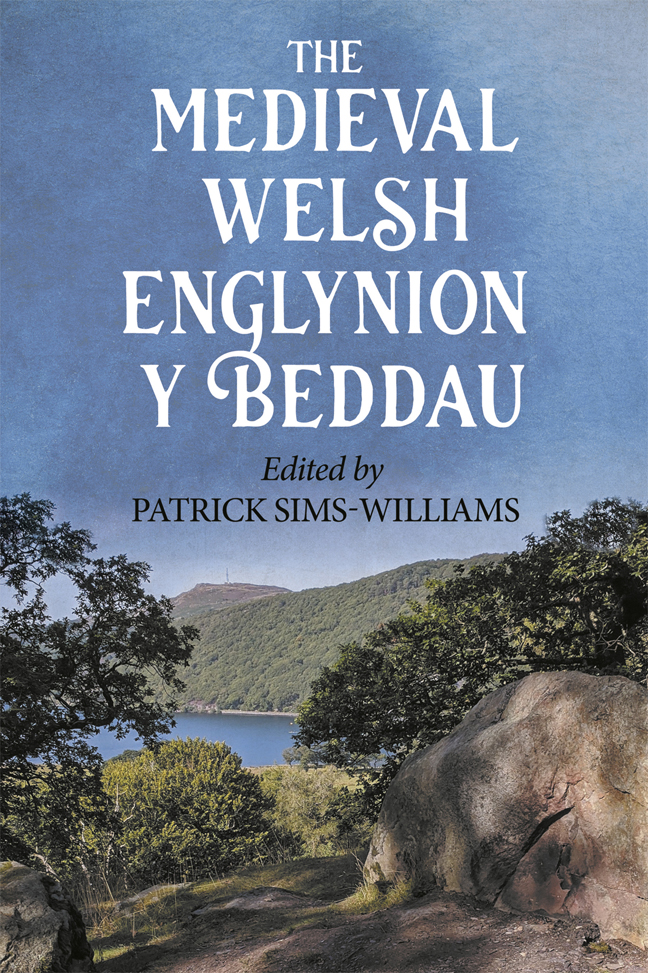 The Medieval Welsh Englynion y Beddau
The Medieval Welsh Englynion y Beddau 1 - Series I, Series III, and the So-Called ‘Series II’ and ‘Series IV’
Published online by Cambridge University Press: 02 March 2024
Summary
Series I
Series I is found in the Black Book of Carmarthen (NLW Peniarth 1). This was written c. 1250, and certainly after 1212, possibly at the Augustinian priory at Carmarthen. It has been known by its present name at least since the sixteenth century. Until recently it was believed that an early-fourteenth-century Gwynedd(?) scribe who added lines to the Afallennau prophecies at the foot of 24v referred to it as ‘y Llyfr du o Gaerfyrddin’ in an ‘exact copy’ of it, mentioned by Humphrey Humphreys (d. 1712), bishop of Bangor and Hereford, but Gruffudd Antur has shown that the bishop was probably misled by a seventeenth-century semi-facsimile on parchment made by Robert Vaughan (now Peniarth 107). The Black Book scribe was evidently a southerner, judging by his language, and many of the poems he included point to a connection with the south-west, perhaps with Carmarthen itself or with one of the nearby monasteries patronised by the family of the Lord Rhys (d. 1197), such as the Cistercian house at Hendy-gwyn (Whitland, Crm.) or the Premonstratensian house at Talyllychau (Talley, Crm.). While the Lord Rhys and his father-in-law Madog ap Maredudd (d. 1160) are prominent in the Black Book praise poems, none of his sons appear; this suggests that the mid-thirteenth-century Black Book scribe drew on a small collection of panegyrics from the previous century.
Englynion y Beddau appear on fols 32r–35r. I.1–69 are written by the main scribe and end with what looks like a concluding englyn (I.69). Afterwards another thirteenth- century scribe inserted I.70–73 in the remaining space at the foot of 35r. He might perhaps have added more if there had been room. His addition is the clearest indication that the text grew by accretion. It seems the main scribe did not copy I.1–69 at a single sitting. Within his part there are a number of changes of ink or pen, sometimes within stanzas, but once (33v, line 8) at the start of a new stanza (I.32). This stanza is one of a pair of linked stanzas, the second of which (I.33) corresponds to the first stanza of Series III. Does this indicate that he was moving to a new exemplar connected somehow to Series III? More likely, this semi-correspondence is a coincidence.
- Type
- Chapter
- Information
- The Medieval Welsh Englynion y BeddauThe 'Stanzas of the Graves', or 'Graves of the Warriors of the Island of Britain', Attributed to Taliesin, pp. 14 - 25Publisher: Boydell & BrewerPrint publication year: 2023


